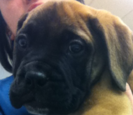All Care Guides
Cat Litter
-
A variety of cat litters are available commercially, including litters made of clay, plastic, wheat, sawdust, newspaper pellets, and corn cobs. The choice depends on what matters most to you and your cat. You may have to try a few to see what you and your cat like. Most cats prefer unscented, scoopable litter because of its sandlike texture. Many owners prefer scoopable litters because they control odors and absorb liquid (clump) well, making it easy for owners to scoop out urine “balls.” This leaves the remaining litter dry and odor free.
Read More Cat Supplies
-
Every well-kept cat needs some basic supplies. Many kinds of supplies are available, so your choices will depend on your and your cat’s needs and preferences. Here are some basic guidelines regarding cat supplies.
Read More Cherry Eye (prolapsed nictitans gland)
-
Like people, animals have upper and lower eyelids. However, they also have a third eyelid on the inside corner of each eye for extra protection of the eye’s surface. Tucked beneath this third eyelid is the nictitans gland, a small, pinkish mass of tissue that helps produce tears to lubricate the eye.
Read More Chest Radiography
-
A radiograph (sometimes called an x-ray) is a type of photograph that reveals the body’s bones and internal organs. The procedure for obtaining a radiograph is called radiography. Radiography is a very useful diagnostic tool for veterinarians because it can help obtain information about almost any organ in the body, including the heart, lungs, and abdominal organs, as well as the bones.
Read More Chocolate Toxicosis
-
Toxicosis is disease due to poisoning. Chocolate contains two ingredients that can be toxic to pets—caffeine, and a chemical called theobromine. While dogs and cats are both very sensitive to the effects of caffeine and theobromine, cats are usually not attracted to chocolate, so chocolate toxicosis tends to be less common in cats.
Read More








